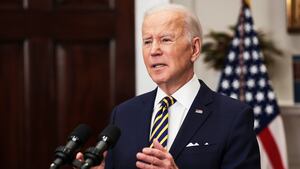Donald Trump’s final tab is in. Legislation and executive actions signed by former President Trump added $7.8 trillion in ten-year budget deficits. When accounting for non-legislative budget savings, the total projected budget deficits expanded by $3.9 trillion over the decade.
These figures appear in my new report, “Trump’s Fiscal Legacy: A Comprehensive Overview of Spending, Taxes, and Deficits” which analyzes Congressional Budget Office data.
It begins with the ten-year (2017-2027) budget baseline that Trump inherited in January 2017, and then measures all subsequent changes to those ten-year estimates that occurred during his presidency. This includes aggregating every line-item of every bill he signed, as well as the deficit shifts driven by economic changes and the Congressional Budget Office’s technical re-estimates of existing tax-and-spending policies.
Rather than just look at the deficit totals, this accounting method separates out the inherited deficit baseline from the actual policies that a president can control.
When President Trump was inaugurated, the CBO projected $10 trillion in deficits over the 2017-2027 decade. By the time Trump left office, CBO’s estimate had grown to $13.9 trillion.
Reducing deficits from the $10 trillion projection should have been easy. During Trump’s presidency, faster-than-expected economic growth raised the ten-year revenue projections by $1.3 trillion, and lower-than-expected interest rates shaved the ten-year interest cost projections by $2.6 trillion. That’s $3.9 trillion in automatic budget savings without lifting a finger.
Instead of building on those savings, the president helped enact $7.8 trillion in new initiatives, flipping his total fiscal imprint to a $3.9 trillion net cost. The largest drivers were pandemic-relief legislation ($3.9 trillion), the 2017 tax cuts ($2 trillion), and legislation raising the discretionary spending caps ($1.6 trillion). Other costs included disaster aid and other discretionary spending ($493 billion), repeal of several Affordable Care Act-related taxes ($299 billion), and hundreds of small policies ($201 billion).
On the savings side, the president’s tariffs saved $367 billion, and the repeal of the ACA’s individual mandate and independent payment review board saved $317 billion.
From a fiscal responsibility point of view, President Trump’s record compares poorly to his predecessors.
Using the same methodology, former President Barack Obama added $5 trillion in legislative costs over a decade, while former President George W. Bush added $6.9 trillion. Not only did Trump sign more ten-year debt into law than his immediate predecessors, he also did it in just a single four-year presidential term, compared to his predecessors’ eight years in the Oval Office.
Congressional Democrats have understandably decried the Trump deficits, yet they share much of the responsibility. The $3.9 trillion in pandemic spending was drafted and passed by a split-control Congress, with a higher percentage of Democratic votes than Republicans. The $1.6 trillion cost of raising the discretionary spending caps reflected a bipartisan compromise to hike both defense and social spending by roughly equal amounts. Disaster aid and the repeal of the ACA taxes were also bipartisan. In many instances, congressional Democrats had wanted to spend even more than the final legislation included.
Of course, President Trump owns the 2017 tax cuts, tariffs, and ACA individual mandate reforms. Overall, the $7.8 trillion in new initiatives resulted from $1.3 trillion in purely Republican policies, and $6.5 trillion in (often overwhelmingly) bipartisan legislation.
Similar deficit bipartisanship also occurred under President Obama, when four-fifths of the $5 trillion legislative costs arose from bipartisan votes to cancel scheduled tax increases, and just one-fifth came from party-line Democratic legislation, such as the 2009 stimulus. Few actions unite Democrats and Republicans like adding red ink.
My purpose here is not to relitigate the necessity of the pandemic-response spending, or the wisdom of the tax cuts or discretionary spending hikes. Rather, it is to inform that debate by accounting for their steep costs.
However, there is no dispute that President Trump left the federal budget outlook in poor shape. He departed the White House with the largest peacetime budget deficit in American history, and a national debt exceeding 100 percent of the economy for the first time since World War II.
The Trump administration’s failure to address unsustainable Social Security and Medicare shortfalls leaves a CBO-projected 30-year baseline deficit of $112 trillion. And now, rising interest rates threaten to drive the cost of servicing these deficits to unsustainable levels. These past several years suggest that Washington is ill-prepared to address these ominous trends.








